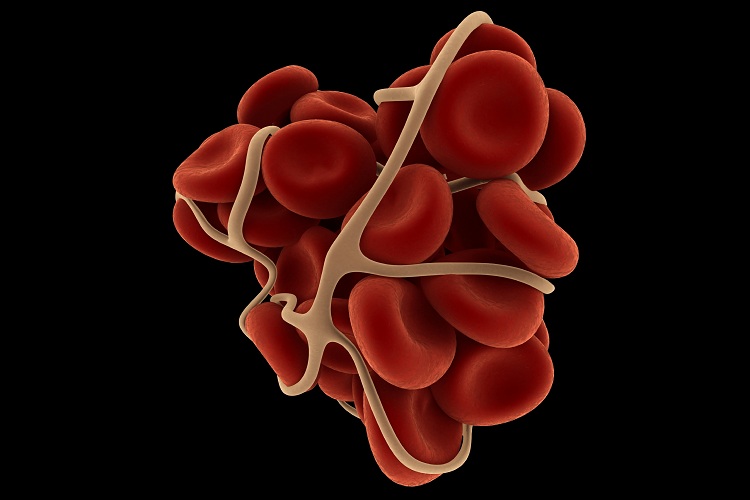World Hemophilia Day
Common category:
World Hemophilia Day is an international observance held annually on April 17 by the WFH. It was started in 1989; April 17 was chosen in honor of Frank Schnabel's birthday. The World Federation of Hemophilia (WFH) is an international non-profit organization dedicated to improving the lives of people with hemophilia (also spelled haemophilia) and other genetic bleeding disorders
History:
Hemophilia has been called a "royal disease". This is because the hemophilia gene was passed from Queen Victoria, who became Queen of England in 1837, to the ruling families of Russia, Spain, and Germany. Queen Victoria's gene for hemophilia was caused by spontaneous mutation. Of her children, one son, Leopold, had hemophilia, and two daughters, Alice and Beatrice, were carriers. Beatrice's daughter married into the Spanish royal family. She passed the gene to the male heir to the Spanish throne. Queen Victoria's other daughter, Alice, had a carrier daughter, Alix. Alix became the Empress Alexandra at her marriage to Russia's Czar Nicholas in 1894. Their son, born in 1904 and named Alexis, inherited hemophilia from his mother. The young man Alexis was treated for bleeds by the mysterious Rasputin, known as a holy man with the power to heal.
It research has come a long way. Around 1900, scientists found that human blood could be divided into groups or types. This made blood transfusions much more successful. In 1930, scientists learned how to separate blood into its major parts, plasma and red cells.
How do you get hemophilia?
People are born with hemophilia. They cannot catch it from someone like a cold.Hemophilia is usually inherited, meaning that it is passed on through a parentâs genes. Genes carry messages about the way the bodyâs cells will develop as a baby grows into an adult. They determine a personâs hair and eye color, for example.
Sometimes hemophilia can occur when there is no family history of it. This is called sporadic hemophilia. About 30% of people with hemophilia did not get it through their parentâs genes. It was caused by a change in the personâs own genes.
How is hemophilia inherited?
The hemophilia gene is passed down from parent to a child. The genes for hemophilia A and B are on the X chromosome. For this reason, hemophilia is called an X-linked (or sex-linked) disorder.
When the father has hemophilia but the mother does not, none of the sons will have hemophilia. All the daughters will carry the hemophilia gene.Women who have the hemophilia gene are called carriers. They sometimes show signs of hemophilia, and they can pass it on to their children. For each child, there is a 50% chance that a son will have hemophilia and a 50% chance that a daughter will carry the gene.
Women can only have hemophilia if their father has hemophilia and their mother is a carrier. This is very uncommon.
Acquired hemophilia:
In rare cases, a person can develop hemophilia later in life. The majority of cases involve middle-aged or elderly people, or young women who have recently given birth or are in the later stages of pregnancy. This condition often resolves with appropriate treatment.
Types of Bleeding Disorders:
Hemophilia A (factor VIII deficiency),
Hemophilia B (factor IX deficiency),
Von Willebrand disease, and
Rare factor deficiencies including I, II, V, VII, X, XI, XII and XIII.
Symptoms of hemophilia:
Hemarthrosis (bleeding into the joints) is characteristic of hemophilia. The knees and ankles are most often affected. The bleeding causes distension of the joint spaces, significant pain, and over time, can be disfiguring. Over time, joint destruction occurs, and joint replacement surgeries can be required.
Bleeding into the muscles may occur withhematoma formation (compartment syndrome).
Bleeding from the mouth or nosebleeds may occur. Bleeding after dental procedures is common, and oozing of blood from the gums may occur in young children when new teeth are erupting.
Bleeding from the gastrointestinal tract can lead to blood in the stool.
Bleeding from the urinary tract can lead to blood in the urine (hematuria).
Intracranial hemorrhage (bleeding into the brain or skull) can lead to symptoms such as nausea, vomiting, and/or lethargy.
Increased bleeding after surgery or trauma is characteristic of hemophilia.
How Is Hemophilia Diagnosed?
Mild hemophilia is indicated by a clotting factor in the plasma thatâs between 5 and 40 percent.
Moderate hemophilia is indicated by a clotting factor in the plasma thatâs between 1 and 5 percent.
Severe hemophilia is indicated by a clotting factor in the plasma of less than 1 percent.
Treatment:
Hemophilia A with a prescription hormone. This hormone is called desmopressin, which they can give as an injection into your vein. This medication works by stimulating the factors responsible for the process of blood clotting.
Hemophilia B by infusing your blood with donor clotting factors. Sometimes, the factors may be given in the synthetic form. These are called ârecombinant clotting factors.â
Hemophilia C using plasma infusion. The infusion works to stop profuse bleeding. The deficient factor responsible for hemophilia C is only available as a medication in Europe.
You can also go to physical therapy for rehabilitation if your joints are damaged by hemophilia.
Post Your Comments for this Article
Related News
-
1.5 million jobs in rural India within one year
2017-06-16 11:45:48
-
Mumbai University offers new courses
2017-06-16 10:58:44
-
Mega Education Conclave In Srinagar
2017-05-22 09:53:23
-
Tamil Nadu SSLC Results 2017
2017-05-19 10:11:46



